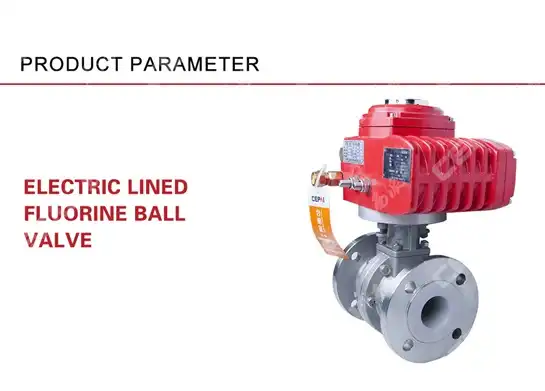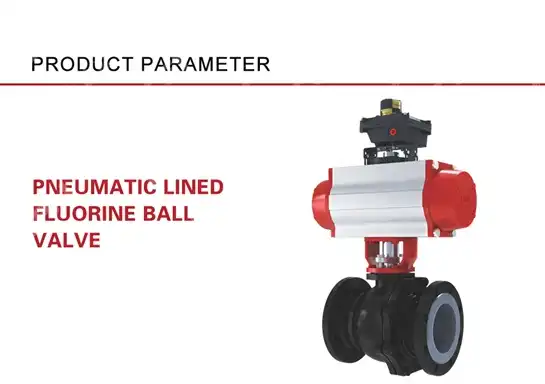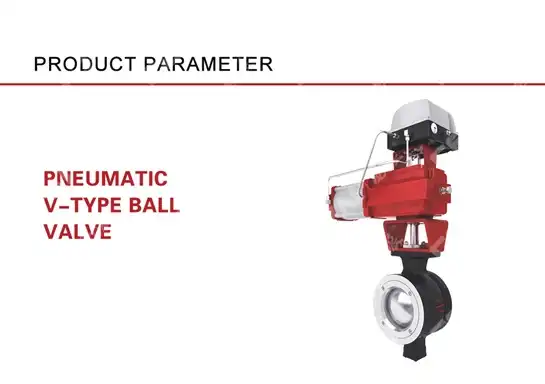Troubleshooting Common Issues with Your Pneumatic Ball Valve Actuator
When your production line suddenly halts because your Pneumatic Ball Valve actuator fails to respond, or when inconsistent valve operation threatens your process safety, you need immediate solutions. Industrial facilities worldwide face critical downtime situations where pneumatic valve actuators malfunction at the worst possible moments, leading to costly production delays and potential safety hazards. This comprehensive guide provides expert troubleshooting strategies, proven diagnostic techniques, and preventive maintenance practices that will help you quickly identify and resolve the most common pneumatic ball valve actuator problems before they escalate into major operational disruptions.
Understanding Pneumatic Ball Valve Actuator Fundamentals
-
Basic Operation Principles
Pneumatic ball valve actuators operate through compressed air pressure that drives a piston or diaphragm mechanism to rotate the valve ball through a quarter-turn motion. The actuator receives pneumatic signals from control systems, typically ranging from 3-15 PSI or 0.2-1.0 bar, which correspond to specific valve positions. Understanding this fundamental operation is crucial for effective troubleshooting of any Pneumatic Ball Valve system. The actuator assembly includes several critical components: the pneumatic cylinder housing, piston or diaphragm assembly, return springs, position feedback mechanisms, and various sealing elements. Each component plays a vital role in ensuring reliable valve operation. When compressed air enters the actuator chamber, it creates pressure differential that overcomes the spring force and moves the actuator stem, which directly connects to the valve ball through a coupling mechanism. The precise coordination between these components determines the overall performance and reliability of the Pneumatic Ball Valve actuator system.

-
Common Actuator Types and Configurations
Different pneumatic actuator designs serve various industrial applications, each with specific troubleshooting considerations. Spring-return actuators use spring force to return the valve to a safe position upon air supply failure, making them ideal for fail-safe applications. Double-acting actuators utilize compressed air for both opening and closing operations, providing more precise control but requiring continuous air supply. Rack and pinion actuators convert linear pneumatic motion into rotary movement through gear mechanisms, offering high torque output for larger valve applications. Understanding your specific Pneumatic Ball Valve actuator configuration is essential for proper diagnostic procedures. Scotch-yoke actuators provide extremely high torque output through a unique mechanical advantage system, while vane actuators offer compact design suitable for space-constrained installations. Each actuator type presents unique failure modes and requires specific troubleshooting approaches. The selection of actuator type significantly impacts maintenance requirements, failure patterns, and diagnostic complexity.
Identifying Air Supply Related Problems
-
Pressure Regulation Failures
Insufficient or inconsistent air pressure represents the most frequent cause of Pneumatic Ball Valve actuator malfunctions across industrial facilities. Air supply issues are among the most common challenges associated with pneumatically actuated valves that can compromise their performance, requiring systematic diagnostic approaches to identify root causes. Begin troubleshooting by verifying that your air compressor maintains adequate pressure levels, typically 80-120 PSI depending on system requirements. Check pressure regulators for proper adjustment and ensure they maintain consistent downstream pressure regardless of supply fluctuations. Examine pressure gauges for accuracy and replace any that show signs of damage or calibration drift. Inspect air preparation equipment including filters, regulators, and lubricators for proper operation and maintenance status. Contaminated or moisture-laden compressed air can cause regulator diaphragms to fail, resulting in erratic pressure control that directly affects Pneumatic Ball Valve actuator performance. Document all pressure readings at various system points to identify pressure drops that indicate internal leakage or component degradation.
-
Air Quality and Contamination Issues
Poor air quality significantly impacts pneumatic actuator reliability and service life, making air preparation system maintenance critical for optimal Pneumatic Ball Valve performance. Water contamination in compressed air systems causes corrosion of internal actuator components, leading to scoring, pitting, and premature seal failure. Oil contamination from compressor systems can cause seal swelling, reduced lubrication effectiveness, and sticky valve operation. Particulate contamination introduces abrasive wear that damages precision-machined surfaces and compromises sealing integrity. Install and maintain proper filtration equipment including coalescing filters for moisture removal, particulate filters for solid contamination control, and activated carbon filters for oil vapor elimination. Monitor filter differential pressure indicators to ensure timely element replacement before breakthrough occurs. Implement regular air quality testing to verify moisture content, particle size distribution, and oil vapor concentration remain within acceptable limits. Consider installing air dryers for critical applications where moisture control is essential for reliable Pneumatic Ball Valve actuator operation.
Diagnosing Mechanical Actuator Failures
-
Internal Component Wear and Damage
Mechanical wear within pneumatic actuators manifests through various symptoms that require careful analysis to identify specific component failures affecting Pneumatic Ball Valve operation. Piston seal degradation allows internal leakage between actuator chambers, reducing available force and causing sluggish valve response or incomplete stroke completion. O-ring failures in critical sealing locations permit external air leakage and contamination ingress, compromising both performance and reliability. Spring fatigue or breakage in spring-return actuators prevents proper fail-safe operation and may cause erratic valve positioning. Examine actuator housing for signs of scoring, corrosion, or dimensional changes that indicate excessive wear or chemical attack. Common signs of pneumatic actuator valve failure include erratic movement, slow response, air leaks, and unusual noises, which help pinpoint specific component problems. Inspect coupling mechanisms between actuator and valve for wear, looseness, or misalignment that affects torque transmission. Document all observed symptoms and correlate them with maintenance history to identify patterns that suggest specific failure modes requiring immediate attention.
-
Alignment and Installation Problems
Improper actuator installation creates stress concentrations and binding forces that significantly reduce Pneumatic Ball Valve service life and reliability. Misalignment between actuator output shaft and valve stem introduces side loading that accelerates bearing wear and causes premature seal failure. Inadequate support structures allow vibration and movement that loosens connections and creates fatigue stress in mounting components. Verify actuator mounting bolt torque specifications and ensure proper gasket installation to prevent air leakage and maintain structural integrity. Check coupling alignment using precision measurement tools to ensure concentric rotation without binding or excessive play. Examine mounting surfaces for flatness, cleanliness, and proper finish to ensure adequate sealing and load distribution. Assess environmental factors including temperature extremes, chemical exposure, and vibration levels that may exceed actuator design limits. Consider thermal expansion effects on rigid piping connections that can impose additional stress on actuator assemblies. Proper installation procedures and regular alignment verification prevent many common failure modes that affect Pneumatic Ball Valve actuator performance and longevity.
Valve-Specific Troubleshooting Techniques
-
Ball Valve Seat and Seal Integrity
Ball valve seat leakage represents a critical failure mode that compromises both process control and safety in Pneumatic Ball Valve applications. Seat wear occurs through normal operation but accelerates under high-pressure differential, abrasive media, or excessive cycling conditions. Thermal cycling can cause differential expansion between ball and seat materials, leading to interference fits or excessive clearances that affect sealing performance. Chemical compatibility issues between process media and seat materials cause swelling, hardening, or degradation that eliminates effective sealing. Perform bubble testing to identify external leakage paths and quantify leakage rates for comparison against acceptable standards. Examine seat surfaces for scoring, embedded particles, or other damage that prevents proper sealing contact. Monitor operating torque requirements as increases often indicate seat interference or contamination problems. Consider seat material selection based on process conditions, including temperature range, chemical compatibility, and expected service life. Implement regular seat inspection and replacement schedules based on operating experience and manufacturer recommendations for optimal Pneumatic Ball Valve performance.
-
Ball Surface Condition and Coating Integrity
The ball surface condition directly affects sealing performance, operating torque, and service life in Pneumatic Ball Valve applications. Surface roughness increases seal wear rates and may cause microleakage that compromises process control accuracy. Coating degradation on specialized ball surfaces reduces corrosion resistance and may introduce contamination into process streams. Examine ball surfaces for pitting, scoring, or other damage that affects sealing interface quality. Monitor coating thickness and adhesion through non-destructive testing methods where applicable. Document surface finish measurements and compare against original specifications to assess wear progression. Consider ball material selection based on process media compatibility, wear resistance requirements, and expected service conditions. Implement proper storage and handling procedures to prevent damage during maintenance activities. Evaluate cleaning procedures and chemical compatibility to prevent inadvertent damage to ball surfaces or coatings during routine maintenance operations.
Control System Integration Issues
-
Signal Processing and Feedback Problems
Modern Pneumatic Ball Valve actuators increasingly incorporate electronic controls and feedback systems that introduce additional complexity and potential failure modes. Position feedback sensors provide valve position information to control systems but can fail due to vibration, temperature extremes, or electrical interference. Signal processing electronics may experience drift, calibration errors, or complete failure that affects valve positioning accuracy. Examine feedback sensor mounting for security and proper alignment with actuator position indicators. Test sensor output signals across the full stroke range and compare against mechanical position indicators to identify calibration issues. Verify electrical connections for corrosion, looseness, or damage that can cause intermittent signal problems. Consider electromagnetic interference sources that may affect sensitive electronic components integrated with pneumatic actuators. Implement proper grounding and shielding practices to minimize interference problems. Document baseline sensor performance characteristics for future comparison and trending analysis.
-
Positioner Calibration and Tuning
Pneumatic positioners significantly improve Pneumatic Ball Valve control accuracy and response characteristics but require proper calibration and periodic adjustment to maintain optimal performance. Incorrect positioner settings can cause valve hunting, overshoot, or inability to reach commanded positions accurately. Supply pressure variations affect positioner output characteristics and may require compensation adjustments. Examine positioner mechanical linkages for wear, binding, or misalignment that affects position feedback accuracy. Verify input signal ranges and ensure compatibility between control system outputs and positioner input requirements. Perform stroke calibration procedures to establish proper correlation between input signals and valve positions. Monitor positioner air consumption and output pressure characteristics to identify internal component problems. Consider environmental factors including temperature variations that may affect positioner performance and require compensation adjustments. Implement regular calibration verification procedures based on process control requirements and manufacturer recommendations.
Preventive Maintenance Strategies

-
Scheduled Inspection and Component Replacement
Proactive maintenance significantly extends Pneumatic Ball Valve actuator service life and reduces unplanned downtime through early problem identification and correction. Develop comprehensive inspection checklists that address all critical components including seals, springs, bearings, and coupling mechanisms. Establish component replacement intervals based on operating experience, manufacturer recommendations, and criticality of application. Monitor performance trends including operating torque, stroke time, and leakage rates to identify degradation before failure occurs. Maintain adequate spare parts inventory for critical components based on lead times and failure history. Document all maintenance activities and correlate with performance data to optimize maintenance intervals and procedures. Consider condition-based maintenance techniques including vibration analysis, thermography, and oil analysis where applicable to pneumatic system components. Train maintenance personnel in proper troubleshooting techniques and safety procedures specific to Pneumatic Ball Valve actuator systems.
-
Environmental Protection and System Optimization
Environmental factors significantly impact pneumatic actuator reliability and require specific protective measures and system design considerations. Temperature extremes affect seal materials, spring characteristics, and air supply properties that influence Pneumatic Ball Valve actuator performance. Implement proper insulation, heating, or cooling systems to maintain actuator components within acceptable temperature ranges. Consider material selection for extreme temperature applications including high-temperature seals and specialized lubricants. Protect electrical components from moisture, corrosive atmospheres, and mechanical damage through appropriate enclosures and mounting techniques. Evaluate air supply system design including pipe sizing, moisture removal, and filtration capacity to ensure adequate performance under all operating conditions. Implement regular system optimization reviews to identify opportunities for reliability improvements and performance enhancements.
Advanced Diagnostic Methods
-
Performance Testing and Validation
Comprehensive performance testing provides objective data for evaluating Pneumatic Ball Valve actuator condition and identifying potential problems before they cause system failures. Stroke time measurement under various load conditions reveals internal friction increases that indicate component wear or contamination problems. Torque measurement throughout the valve stroke identifies binding, misalignment, or seat interference issues that affect reliable operation. Leak testing quantifies external and internal leakage rates for comparison against specifications and previous measurements. Implement standardized testing procedures that ensure consistent and repeatable results across different maintenance personnel and time periods. Document all test results and maintain historical databases for trend analysis and predictive maintenance applications. Consider automated testing equipment for critical applications where frequent testing is required or human safety concerns exist.
-
Failure Analysis and Root Cause Investigation
When pneumatic actuator failures occur, systematic failure analysis identifies root causes and prevents recurrence through design modifications or maintenance procedure improvements. Preserve failed components for detailed examination including metallurgical analysis, dimensional measurement, and chemical testing where appropriate. Document operating conditions at time of failure including pressure, temperature, cycle count, and environmental factors that may have contributed to component degradation. Examine maintenance records for correlation between failure modes and previous service activities or component replacements. Consider design adequacy for actual operating conditions including pressure ratings, temperature limits, and cycle life expectations. Implement corrective actions based on root cause findings and monitor effectiveness through continued performance tracking and failure analysis activities.
Conclusion
Effective troubleshooting of Pneumatic Ball Valve actuators requires systematic diagnostic approaches, comprehensive understanding of component interactions, and proactive maintenance strategies. By implementing the techniques outlined in this guide, maintenance professionals can significantly reduce downtime, improve system reliability, and extend equipment service life through early problem identification and correction.
Cooperate with CEPAI Group Co., LTD.
As a leading China Pneumatic Ball Valve manufacturer and China Pneumatic Ball Valve supplier, CEPAI Group Co., LTD. brings over 15 years of expertise in high-precision valve manufacturing to solve your most challenging industrial automation needs. Our state-of-the-art facility in Jiangsu Province features the longest high-precision intelligent manufacturing flexible production line in the Asia Pacific region, ensuring exceptional quality and reliability in every High Quality Pneumatic Ball Valve we produce. With comprehensive certifications including API, ISO, and CE standards, plus supplier qualifications from major companies like PetroChina, Sinopec, and CNOOC, we deliver proven solutions for critical applications. Whether you need standard Pneumatic Ball Valve for sale or custom-engineered solutions, our expert team provides complete pre-sales consultation, installation support, and after-sales service backed by advanced testing facilities and quality assurance programs. Contact our China Pneumatic Ball Valve wholesale team at cepai@cepai.com for competitive Pneumatic Ball Valve price quotes and technical assistance tailored to your specific requirements.
FAQ
Q: What causes a pneumatic ball valve actuator to respond slowly or not at all?
A: Common causes include insufficient air supply pressure, internal seal leakage, contaminated air lines, or mechanical binding in the actuator mechanism.
Q: How do I identify if my pneumatic actuator has internal air leakage?
A: Listen for continuous hissing sounds, monitor air consumption rates, check for pressure drops across the actuator, and observe slower-than-normal stroke times.
Q: What maintenance interval should I follow for pneumatic ball valve actuators?
A: Inspect monthly for external leaks and proper operation, perform comprehensive maintenance every 6-12 months, and replace seals every 2-3 years based on operating conditions.
Q: Can environmental factors affect pneumatic actuator performance?
A: Yes, temperature extremes, moisture, dust, and chemical exposure significantly impact actuator reliability and require appropriate protective measures and material selection.
References
1. "Pneumatic Actuator Troubleshooting and Maintenance" by Johnson Controls International, Technical Engineering Department
2. "Industrial Valve Actuator Systems: Design, Operation and Maintenance" by Smith, Robert A., Mechanical Engineering Press
3. "Compressed Air System Optimization for Industrial Applications" by Parker Hannifin Corporation, Pneumatic Division
4. "Failure Analysis of Pneumatic Control Components in Process Industries" by Anderson, Michael K., Journal of Industrial Maintenance Engineering
_1746598557316.webp)
Get professional pre-sales technical consultation and valve selection services, customized solution services.

About CEPAI


